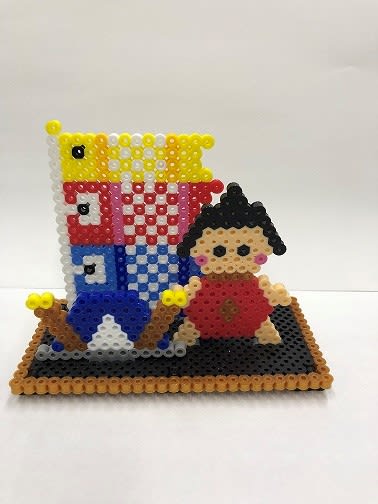
子どもの日とは日本の国民の祝日で毎年5月5日に行われ、基本的にゴールデンウィークの最終日でもある。
この日の趣旨は子どもの人格を重んじ、子どもの幸福をはかると共に、母に感謝することである。
この日は1948年に日本政府により正式に国民の祝日と制定された。
1948年までは3月3日が女の子の日で5月5日は男の子の日として認知されていた。
しかし、政府はこの日を国民の祝日と定め、全ての子どもたちの幸福を祝うと共に、
母親への感謝を表す日となり男の子の日から子どもの日へと名称が変更された。
この日は家族でこいのぼりを飾る(中国の伝説では鯉は滝を登り泳ぎ龍となり天へと飛んでいくと考えられていた。
そして、風になびき泳いでいる様に見えるこいのぼりはそれに良く似ている事からこいのぼりを飾る習慣が始まった。)、
1匹は父親、1匹は母親、そして残りは子どもを表している。
また、この日には伝統的に力と活力を象徴とした兜を被った五月人形が飾られる。
Children's Day (こどもの日 Kodomo no Hi) is a Japanese national holiday
which takes place annually on May 5 and is the final celebration in Golden Week.
It is a day set aside to respect children's personalities and to celebrate their happiness.
It was designated a national holiday by the Japanese government in 1948.
Until 1948, Children's Day was known as Boys' Day (also known as Feast of Banners)
while Girls' Day (Hinamatsuri) was celebrated on March 3. At that time,
the government decreed this day to be a national holiday to celebrate the happiness
of all children and to express gratitude toward mothers. It was renamed Kodomo no Hi.
On this day, families raise the carp-shaped koinobori flags
(carp because of the Chinese legend that a carp that swims upstream becomes a dragon and flies to Heaven,
and the way the flags blow in the wind looks like they are swimming), with one carp for the father,
one for the mother, and one carp for each child (traditionally each son).
Families may also display a samurai doll usually riding on a large carp
(often representing the Japanese folk heroes Kintarō or Momotarō),
and/or the traditional Japanese military helmet, kabuto,
due to their tradition as symbols of strength and vitality.
※Wikipediaより抜粋(Sited from Wikipedia)


















